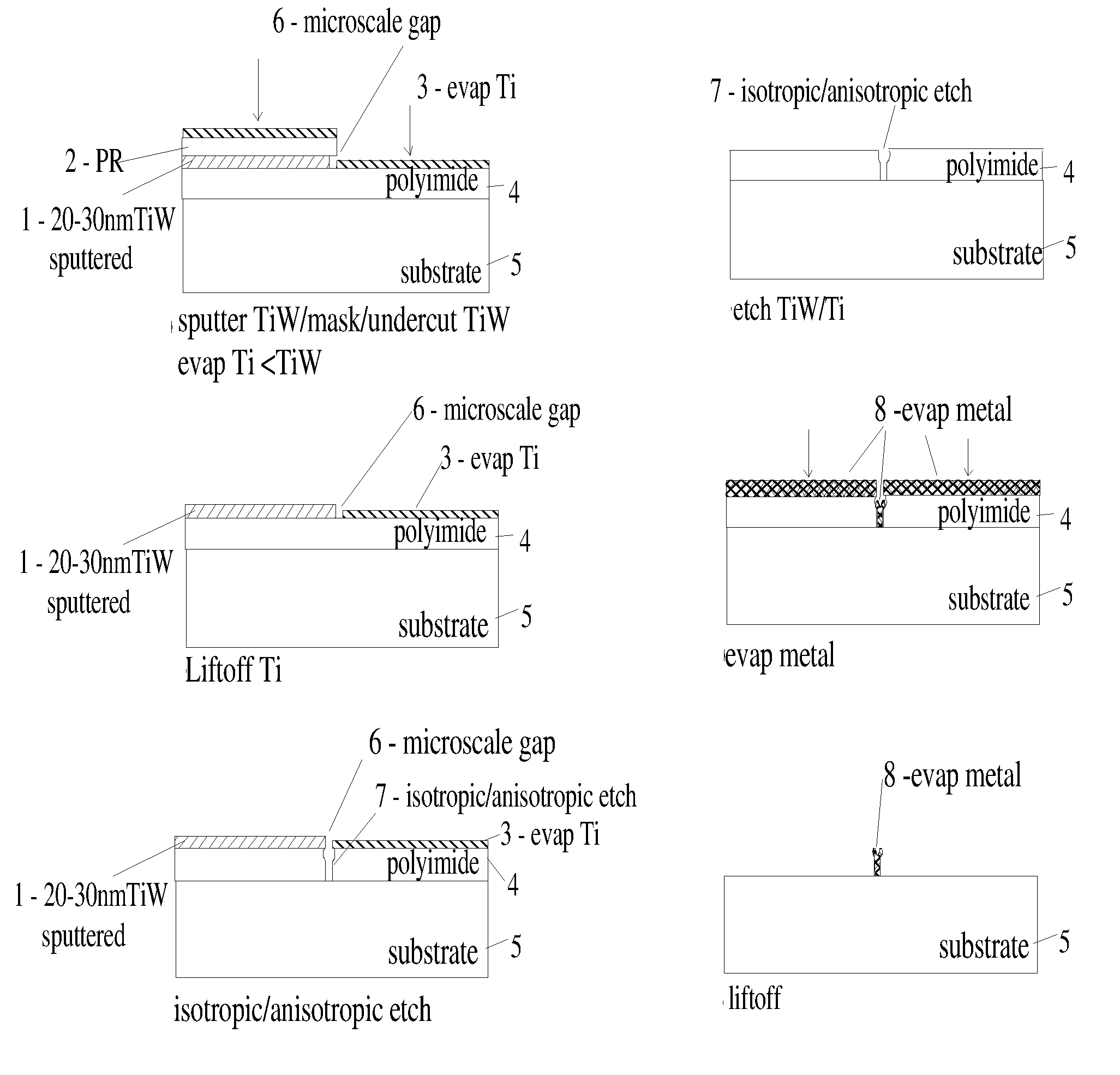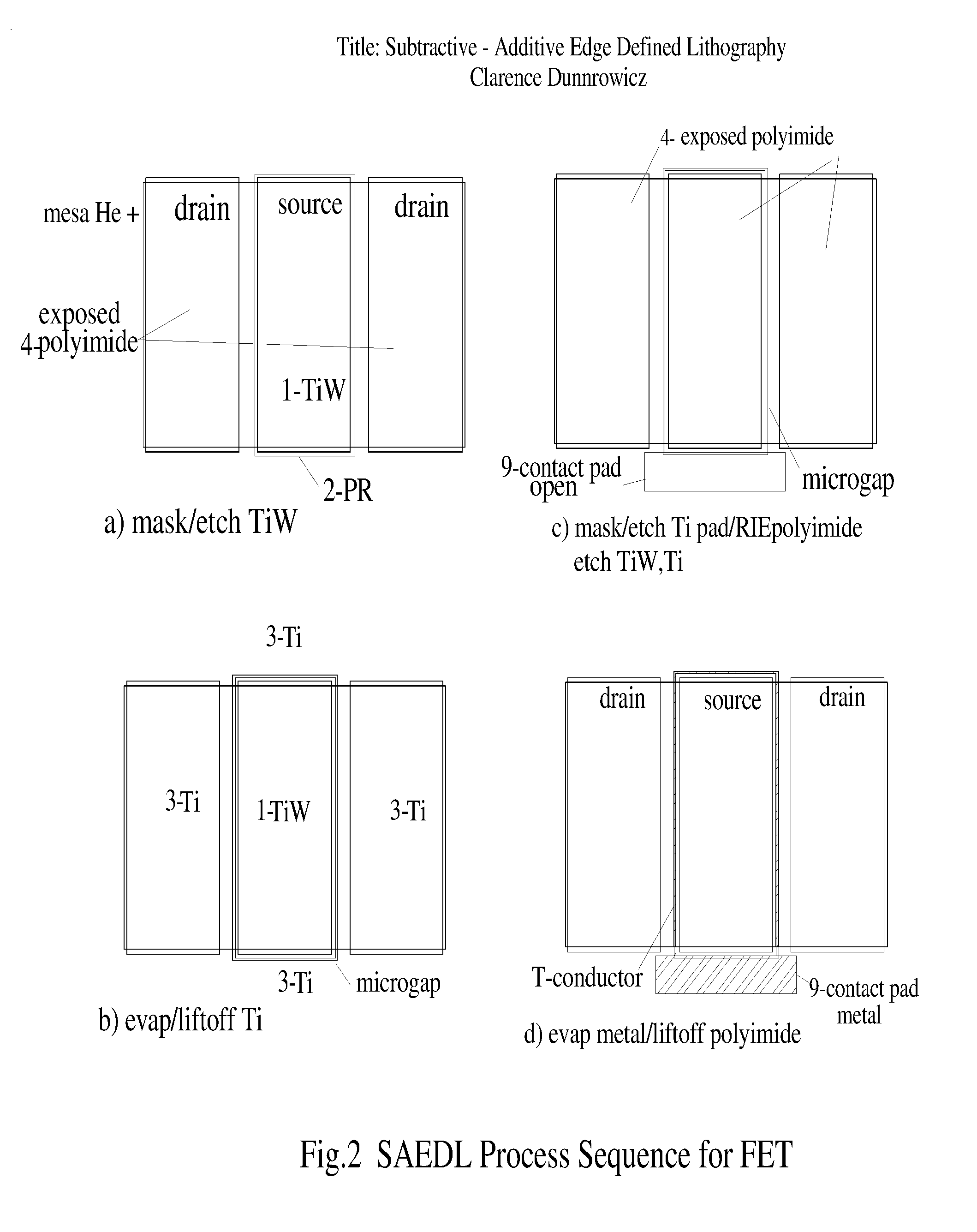Subtractive - Additive Edge Defined Lithography
a technology of additive edge and lithography, which is applied in the direction of optics, instruments, photomechanical equipment, etc., can solve the problems of uneven topography and other problems, and achieve the effects of good adhesion, small grain size, and high selectivity
- Summary
- Abstract
- Description
- Claims
- Application Information
AI Technical Summary
Benefits of technology
Problems solved by technology
Method used
Image
Examples
Embodiment Construction
[0027]FIG. 1 is a section view illustrating the basic subtractive-additive edge defined lithographic (SAEDL) processing sequence with (TiW / Ti) masking films to generate a liftoff T-shaped metal conductor using a polyimide planarizing layer.
[0028] Follow polyimide 4 layer manufacturer recommended procedure for substrate 5 preparation. This typically involves hydrocarbon contamination removal and a desorption bake prior to application of an adhesion primer. Try to choose a polyimide 4 that approximately matches substrate 5 thermal expansion, but it is not critical as it is typically kept thin and not fully cured for this application. Viscosity and spin speed will depend on desired final dimensions of T-shaped conductor 8, etc. Dupont Pyralin series or similar have given good results. After spin, a prebake of approximately 100 deg. C. for 60 min., followed by 200 deg. C. for 60 min. in nitrogen has been found to give satisfactory stabilization.
[0029] Immediately load substrates 5 int...
PUM
 Login to View More
Login to View More Abstract
Description
Claims
Application Information
 Login to View More
Login to View More - R&D
- Intellectual Property
- Life Sciences
- Materials
- Tech Scout
- Unparalleled Data Quality
- Higher Quality Content
- 60% Fewer Hallucinations
Browse by: Latest US Patents, China's latest patents, Technical Efficacy Thesaurus, Application Domain, Technology Topic, Popular Technical Reports.
© 2025 PatSnap. All rights reserved.Legal|Privacy policy|Modern Slavery Act Transparency Statement|Sitemap|About US| Contact US: help@patsnap.com



